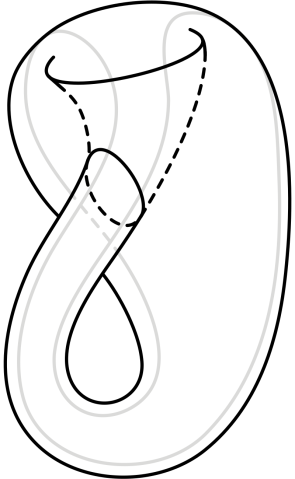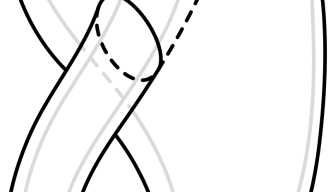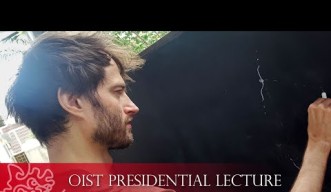Using new tools to solve old problems

Professor Andrew Lobb arrived at the Okinawa Institute of Science and Technology Graduate University (OIST) in October 2019 to take part in the Visiting Mathematics Professor Program. This program brings promising mathematicians to OIST for six months to organize symposia in Okinawa and contribute to research. Little did Professor Lobb know that his time on the island would be extended by several months due to the global pandemic.
But those months spent in lockdown in subtropical Japan did not go to waste. Through collaborating with Professor Joshua Greene from Boston College, Professor Lobb focused on a mathematical problem that has remained unsolved for over a century – can rectangles of all ratios fit inside any smooth loop?

With a Master’s in Mathematics from Oxford University and a PhD from Harvard University, Professor Lobb specializes in topology and geometry in three- and four-dimensional space.
"For centuries, geometry has been of the utmost importance to mathematics. If we strip away the information about distances and angles from geometry, we get the field of topology. Topological spaces underlie most of modern mathematics – many fields can be thought of as studying topological spaces overlaid with other structures relevant to those fields," said Professor Lobb.
Fitting a square peg into a round hole
The notion of fitting a square peg into a round hole might sound familiar as it bears similarities to a common saying. It refers to an individual who is trying to fit into an environment that is particularly unsuitable for them. But mathematically, it has a different meaning. The ‘square-peg’ question was first asked in 1911 by Otto Toeplitz, a German mathematician, who theorized that every Jordan curve – i.e. a curve that’s closed and doesn’t overlap with itself – contains a square. This question remains unsolved but Professor Lobb and Professor Greene worked on the similar, ‘rectangular-peg problem’. Professor Lobb discussed this research in a presidential lecture.
He began the lecture by explaining how a person may have just inherited a square peg factory. “All the pegs are square,” said Professor Lobb. “If someone comes to them with a square-shaped hole, then they can create a square peg that fits inside it. But even if someone comes to them with a circular hole, they can still make a square peg to fit the hole, just by finding four points of the circle where they can put the peg.”
But the rectangular peg problem takes this further. Rather than just looking at circular or square holes, it looks at all manner of Jordan curves. The theory goes that a rectangle of any ratio can fit somewhere within the loop, with its four corners touching the edges of the curve.
“This is a problem that’s intriguing because it’s so easy to state but so hard to make mathematical constructions with,” said Professor Lobb.
Progress was made on the rectangular peg problem in the 1970s, when a mathematician – Herbert Vaughan – stopped thinking about a rectangle as a set of four points and instead began to think of it as a relationship between two pairs of points. Thus, each rectangle has a midpoint – a place where the four points meet. When it comes to the loop, that point is in the exact middle of any two points on the curve. Vaughan discovered that if one takes a loop, determines all the midpoints between all the pairs of points and plots them on a flat plane, they end up with something unusual.
The result was a Möbius strip, a twisted closed loop that provided researchers with a new object to play around with. Although mathematicians have now been using the Möbius strip in an attempt to solve this problem for several decades, what sets the work completed by Professor Lobb and Professor Greene apart is that they were able to use a modern framework – symplectic geometry. In a recent piece in Quanta Magazine, writer Kevin Hartnett dived into the history of this problem and explained exactly what the two mathematicians did differently.


Essentially, the two mathematicians took the Möbius strip and transported it to another geometric space. It went from a two-dimensional space to a four-dimension space and then to a symplectic four-dimensional space.
When two Möbius strips come together, they form a Klein bottle which, in a three-dimensional space, intersects with itself. However, in the four-dimensional space, the Klein bottle is given enough wiggle room that it doesn’t have to intersect with itself. But, in the symplectic four-dimensional space, the conditions once again mean that the Klein bottle must intersect with itself. This intersection was key to Professor Lobb and Professor Greene solving the rectangular peg problem.
Using this modern framework allowed the two mathematicians to solve a problem that had resisted being solved for over a century. Professor Lobb went on to say that he would encourage mathematicians to go back and look at unsolved theories and questions. “We should think about how we can apply modern day techniques to old problems,” he said.
Specialty
For press enquiries:
Press Inquiry Form


















